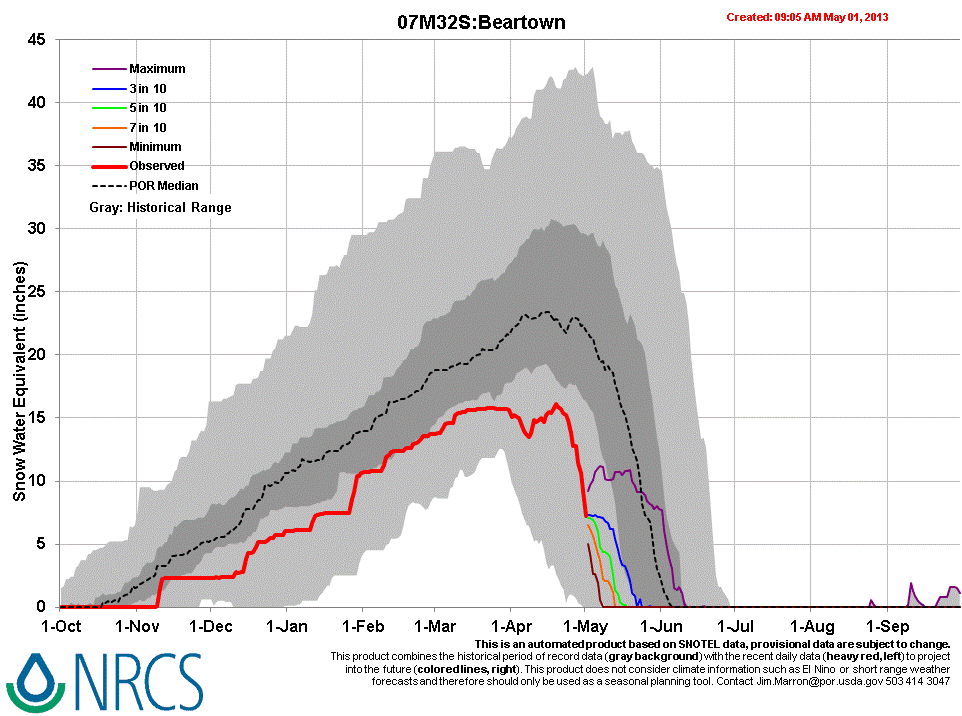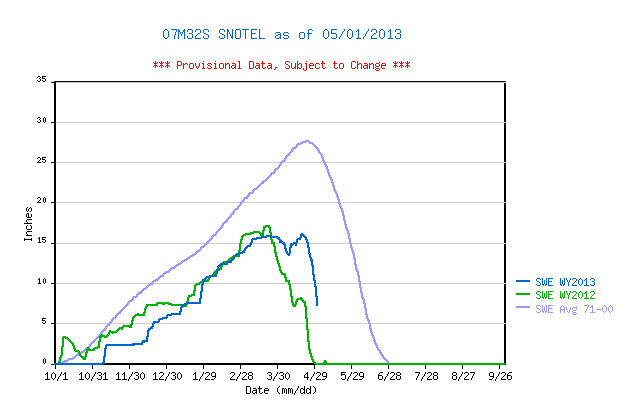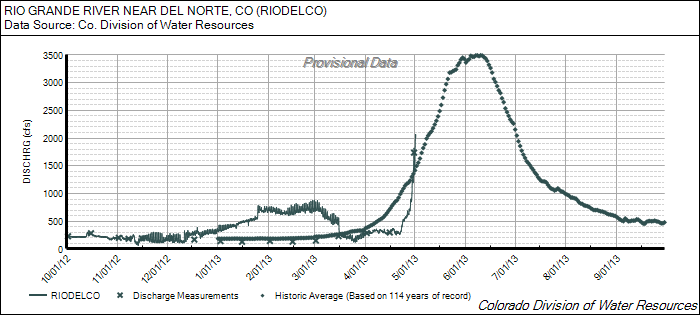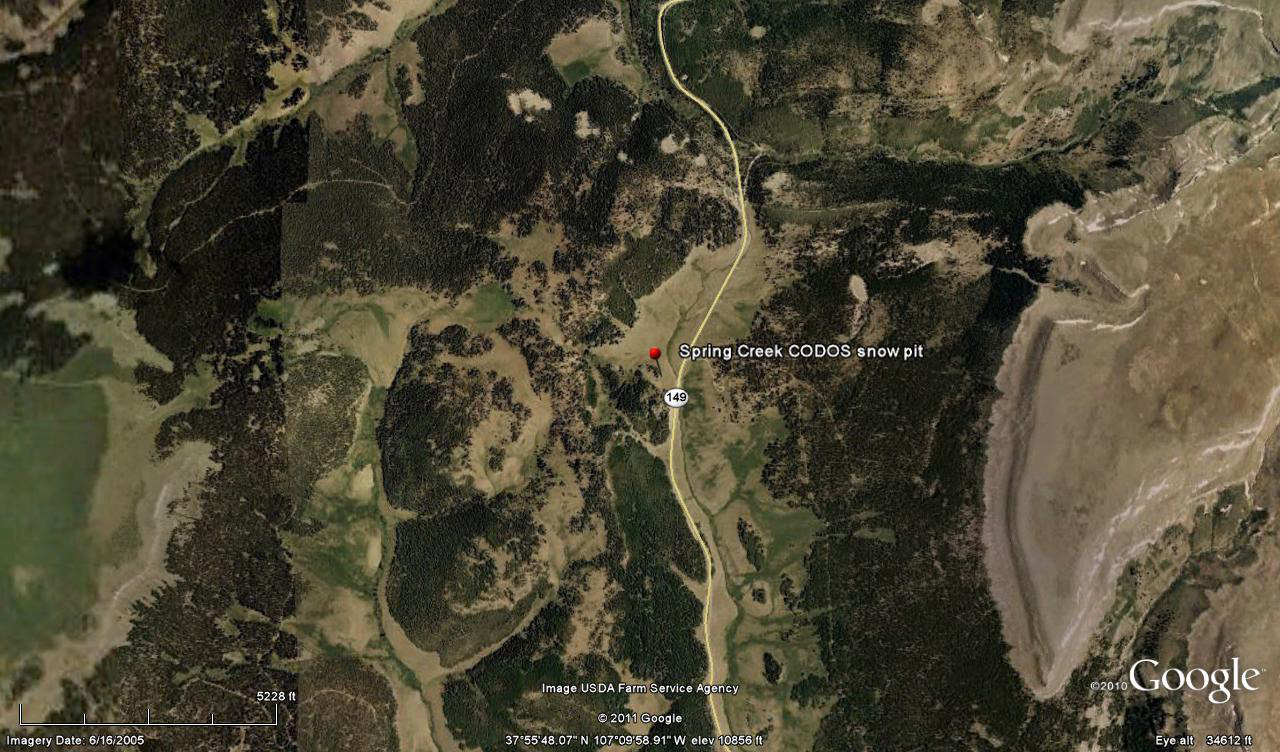 CODOS Update for Spring Creek Pass site:
CODOS Update for Spring Creek Pass site:
visited May 1, 2013
Summary | Snowpack | Melt Rate | Stream Flow | Forecast
Summary
Our May 1, 2013 site visit to Spring Creek Pass found snowcover effectively gone at the CODOS dust monitoring site. Snowcover was entirely gone just a short distance down valley, and in the Rio Grande main stem valley floor. Substantial dust was present at the patchy snow surface, and on higher terrain where snowcover remained, and an “all layers merged” sample was collected near the CODOS pit site for chemical analysis (by our USGS partners). Rio Grande River snowmelt runoff was in the process of surging from very low levels to above-average values and the river appeared to be approaching bank full, above Creede. A wind event the day before our site visit produced a very weak dust-on-snow event (D9) but had no significant effect on the already extremely dirty snow surface.
SnowPack Discussion
Our May 1, 2013 site visit to the Spring Creek Pass CODOS site found snowcover effectively “all gone”, with patches of open ground and bushes showing throughout the CODOS plot; no snow profile was performed. According to the Slumgullion Snotel, snow cover SWE peaked at 12.0” SWE on April 23, very near the Water Year 2012 Peak SWE and close to the 1971-2000 average date of Peak SWE. Along the Rio Grande main stem, the Beartown Snotel peaked at 16.0” SWE on April 19, just short of the WY 2012 peak, far below the 1971-2000 mean.
Our last Spring Creek Pass snow profile, on April 12, 2013 found a fresh D6 dust layer just below the surface of a still-cold snowpack containing only 8.6” (218 mm) of SWE. Subsequently, dust events D7 and D8 were deposited and, despite mid-April storms, the snowpack warmed, became isothermal, and rapidly melted. On April 30, the remaining patches of snowcover near the CODOS snow profile site had all dust layers merged in the snowpack surface. Snow surface reductions in albedo produced by those merged dust layers rivaled that observed at Red Mountain Pass the day before.
Aside from north facing slopes, snowcover was essentially absent along Highway 149 in the upper Spring Creek drainage, and entirely gone on the valley floor of the Rio Grande main stem. Distant views of the alpine terrain above the Rio Grande main stem clearly showed extensive exposure of D8/D7/D6 dust, all the way to ridgelines, and snowcover quickly decreases below treeline.
| April 12th Snow Profile | May 1st Snow Profile | |
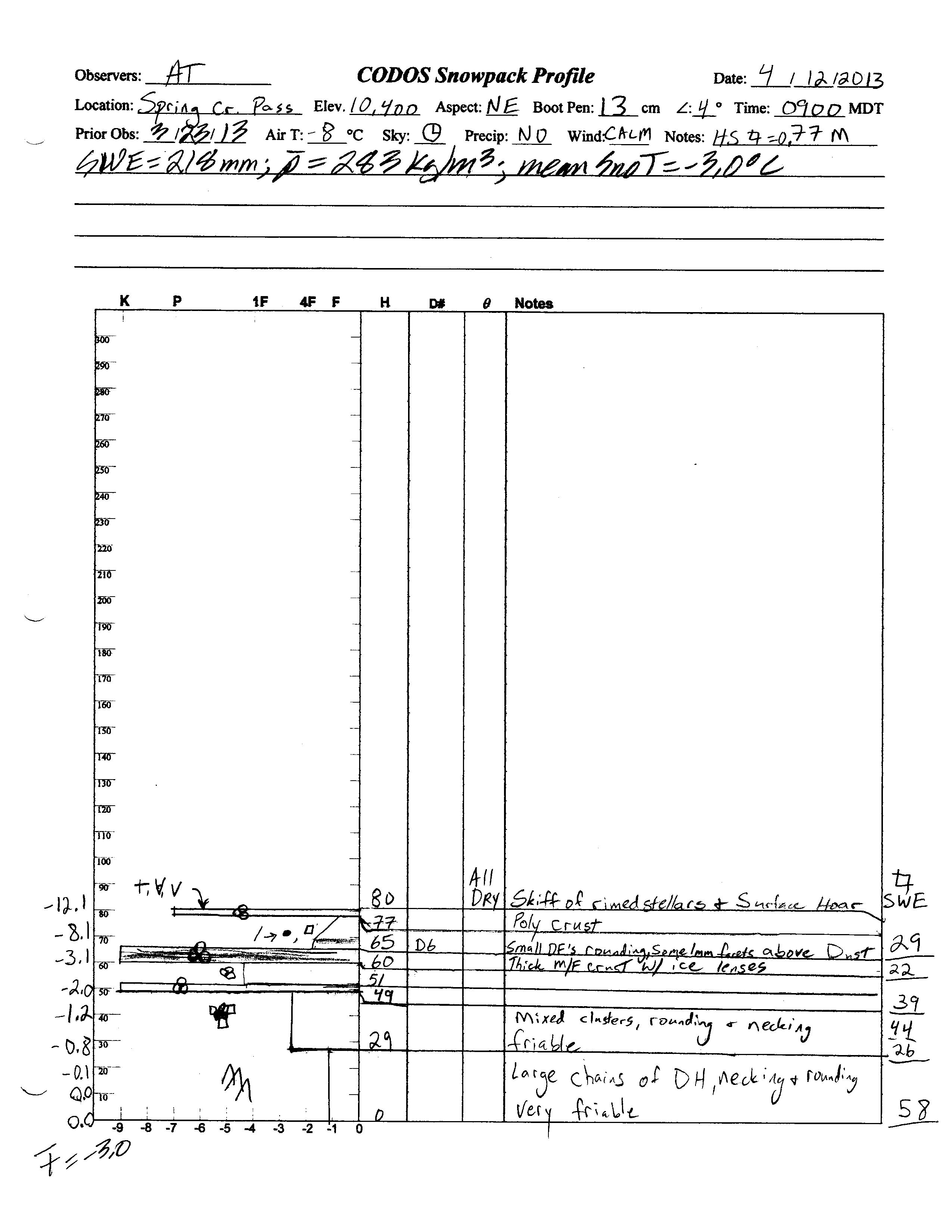 |
Snow All Gone by site visit May 1, 2013 |
Melt Rate
Snowmelt rates recently accelerated at the well-shaded, slightly north-facing Slumgullion Snotel site as dust layers D8/D7/D6 emerged and merged in late April. Melt rates reached 0.6” SWE loss, per day, just prior to our May 1 site visit. Farther west, up the Rio Grande watershed, the Beartown Snotel recorded SWE losses of up to 2.0” per day prior to our site visit, enhanced by merged dust layers D8/D7/D6.
Stream Flow
The rapid acceleration of snowmelt rates in the final days of April, as D8/D7/D6 rapidly emerged, helped produce significant surging in runoff at the Rio Grande at Del Norte gauge. That gauge was reporting much below-average discharge in early and mid-April, just before surging at the end of the month to above-average levels. That surge in streamflows stalled during a subsequent change in weather, with reduced solar inputs and much colder overnight temperatures. However, flows may quickly begin to climb again under sunny skies today (Thursday, May 2) and Friday. Given the scant remaining snowcover, however, this season seems likely to produce yet another case study in early and “flashy” runoff behavior, with a rapid decline in flows after a short period of sub-par, ‘peak’ flows several weeks ahead of the median peak date.
Forecast
As of this writing, Thursday, May 2, 2013 the National Weather Service expects clear, sunny skies and no chance of precipitation today or Friday. This return to maximum potential solar inputs, along with warming temperatures (especially overnight low temperatures) will enable a resumption of higher melt rates and streamflows. However, this return of the sun will be brief and may not result in a full restoration of the late April discharge rates. This weekend, increasing chances for afternoon snow/rain showers could reduce solar insolation to the snowcover somewhat, but NWS still expects partly sunny conditions and a continued slow rise in air temperatures (including overnight low temperatures). No significant accumulations of snow are anticipated; spring rains on snow always enhance snowmelt. Next week, atmospheric “blocking” to our east may result in a period of prolonged, unsettled weather for western Colorado, perhaps also resulting in reduced solar inputs to the snowpack.



